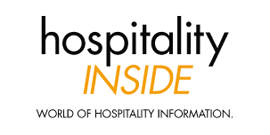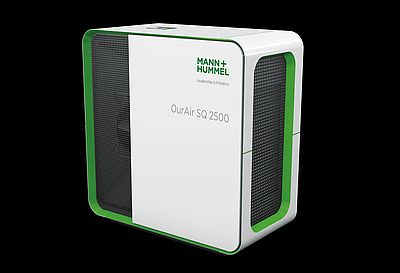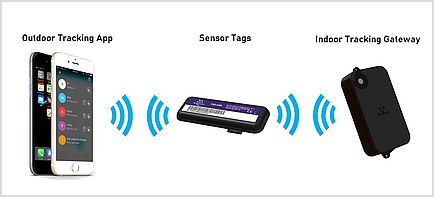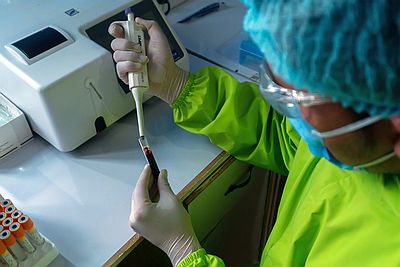Clean air, clean rooms, rapid tests: This helps in the pandemic
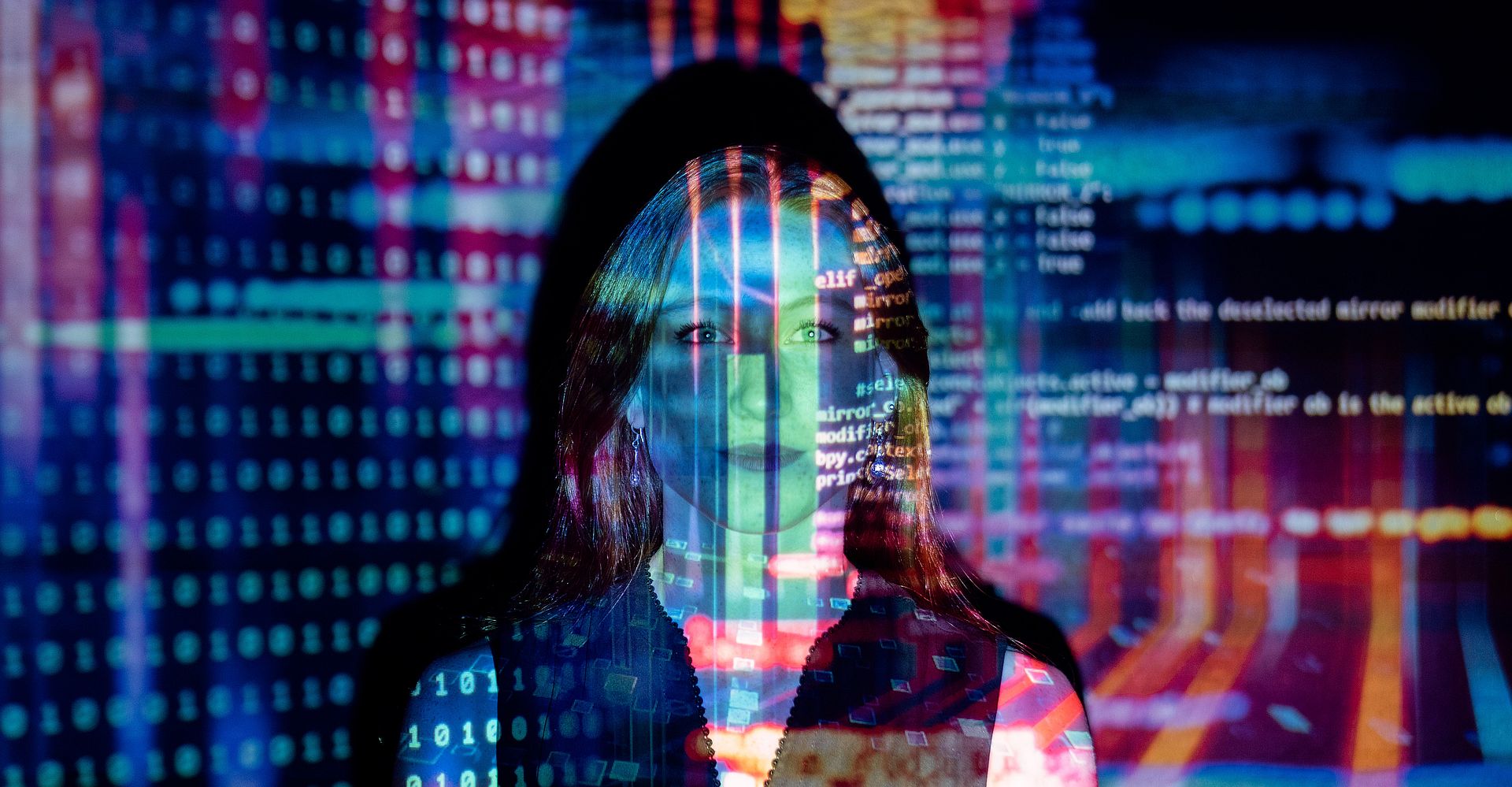 |
| Without digital helpers, it will not be possible to control and eliminate the virus. / Photo: unsplash thisisengineering raeng |
Berlin (January 29, 2021). In the course of the Covid 19 pandemic, hospitality companies implemented hygiene concepts virtually overnight during the April 2020 lockdown in accordance with government requirements. Since autumn, one lockdown has followed another. But the politicians have their sights set on the hotels and catering businesses again and again: now their ventilation systems, among others, are coming into focus. Yes, they help, just like other technologies against the virus - and the continuing stigmatisation of the industry.
Hotel and restaurant businesses are currently desperately waiting for help and a sustainable opening concept like the proposed No-Covid Initiative (in German language) - especially after the lockdown was extended until mid-February.
2021 continues to threaten to become a disaster. Insiders see the obligation to file for insolvency, which has now been postponed from January to the end of April, merely as a delay in the drama. In the new year, this threatens closures en masse.
The framework of classical hygiene concepts in the SARS-CoV-2 pandemic is not sufficient for the politicians, even if the TÜV has certified them. Therefore, besides the introduction of more clinical hygiene standards, it is time to think about other possibilities that contribute to the reopening and protection of hotel and restaurant guests: And these are new technologies.
What has happened so far. hospitalityInside.com already reported in July 2020 about the special characteristics of the SARS-CoV-2 virus and pointed out the resulting necessities for air purification of closed rooms (see this link).
 |
|
| Restaurants: Hygiene protocols alone are not sufficient for politicians. Room ventilation is the issue. / Photo: unsplash jay wennington |
Meanwhile, many hospitality companies have etrofitted air conditioning systems or installed ventilation systems within their means. Some companies, especially cruise lines and the aviation industry, have implemented testing strategies. The hospitality industry's creativity extends to outdoor tables under igloo tents for the winter or sustainably partitioned seating areas in larger enclosed spaces.
However, all this was not enough for the German legislators at federal and state level. They closed the restaurants again in autumn/winter.
Programme to promote air-conditioning systems
In October 2020, the Federal Ministry of Economics approved a multi-million euro programme to promote air-conditioning systems in public buildings and places of assembly. While this addressed a long-known emergency, it did not help provide a solution for hotels and restaurants in the pandemic. This is because often the air-conditioning systems that could be rebuilt with these programme funds must first prove themselves in long-term approval procedures of up to two years (on average). Therefore, this programme cannot be described as an immediate solution for affected hotels or restaurants in the pandemic. Only very few suppliers allow the replacement of filters without requiring approval, as can be seen from the website of VDMA/Verband Deutscher Maschinen- und Anlagenbau.
End lack of confidence in technology
State of the discussion. There has been much discussion in the media about technologies whose use is supposed to help contain the spread of the virus. All these technologies, whether new rapid tests such as antigen tests or LAMP-PCR tests (a modified RNA rapid test) or new ventilation systems, have one thing in common: there is no consensus about their effectiveness, neither among researchers nor among the responsible authorities. Various opinions are also leaking out from the political arena. The approval of new products on official lists seems almost impossible.
Both reflect a lack of confidence in new technologies and in the actors. Some scientific representatives of air-conditioning technologies even condemn ventilation systems and the authorities are bothered by the fact that those new technologies are not 100 per cent safe. In contrast, the British government easily allows new technologies to be tested in clinical trials and publishes their positive results prominently on its own website.
How to convince authorities and entrepreneurs?
Solution approach no. 1: individual reason
There is a solution approach: it is to look at the pandemic from the perspective of a risk minimisation strategy. After all, no technology offers 100 percent safety. An example of this is road traffic, which is socially accepted as a source of general life risk. To manage the risks caused, the legislator has created a code of conduct with a liability system, the road traffic regulations.
 |
|
| Photo: SCuwIU unsplash |
Can such thoughts be transferred to life with the pandemic? Yes. Because there seems to be a consensus that the pandemic will last longer. So there is no other way but to recognize that the pandemic risk situation will also last longer. Whether the upcoming vaccinations can change this situation quickly is currently unknown. This in turn requires a proactive approach to the new reality. And it also means recognizing that the main culprits in the spread of the virus are the people themselves. This is why personal behaviour is so immensely important in breaking the chains of infection down to a no-covid state.
Solution No. 2: the pandemic architecture
Technology can help here in an accompanying way. For comprehensive corona management, the best available technologies must first be identified, then recognized and deployed by the relevant authorities. If one consults the expert opinion of the scientific expert group for corona management in the BMI (Federal Ministry of the Interior) from April 2020, it even spoke of an architecture for living with the pandemic.
This architecture reflects the ways in which the virus spreads. This makes it detectable and comprehensible. Among other things, this enables health authorities to trace the chains of infection. In addition, it enables the resurgence of mobility even in a life with a pandemic. The German group of scientists around the Australian and New Zealand government advisors to the Green Zone models there also advocate the greater use of technologies, e.g. in a distinct testing strategy.
Proven technology helpers
A holistic Corona architecture includes not only technologies for ventilation and testing infrastructures, but also digital technologies, namely those that enable wider mobility in addition to the Corona warning app; unfortunately, the warning app in Germany, which was developed at a cost of 63 million euros (as of December 2020), does not work as reliably as expected and is not widely enough accepted by society. At the end of 2020 it had only been downloaded about 25 million times.
Technological helpers can furthermore be systems that offer digital passport systems at airports or in hotel lobbies. Tracing systems directly linked to hospitals can also help. These could be extremely reduced "tag" systems in terms of energy consumption and data use, which track movements but do not use individual data, only the location and movement data of a non-identifiable infected person.
Such a system must be combined with a rapid test that produces reliable results. Only a PCR-based or a LAMP-PCR test can do this.
In addition, ventilation systems from the hospital sector, for example, can provide additional confidence in a holistic corona concept. Proven systems are more likely to be trusted. Until now, people had years to put new technologies through their paces before launching them on the market. This is different now, one wants to enable a functioning economic cycle quickly. This is becoming more and more important as the need and the debate about re-balancing the fundamental rights of all concerned becomes more urgent due to the perpetuating lockdown situation.
In the inset below, we introduce you to three companies whose proven and new technologies address three crucial points in pandemic response: near-100% indoor air purification, anonymous detection of virus spread indoors, and rapid testing with results within 60 minutes. / kn
|
3 INNOVATIVE TECHNOLOGIES FOR VIRUS CONTROL
Scientific tests have shown that these HEPA filters - which are also installed in mobile as well as stationary HEPA indoor air purifiers OurAir SQ (photo) and OurAir TK - safely filter 99.995 percent of viruses, bacteria and micro-organisms from the air. And they would even be a solution for classrooms in schools: Within 15 minutes the aerosol concentration in a classroom could be reduced by 90% - after 4 minutes it was already 50%. These are the findings of expert reports on the company's website. Mann + Hummel develops, produces and tests the filters itself at its Ludwigsburg site and even operates its own virus monitoring system in closed rooms. Cost: Depending on the size, the filter systems cost €2,485 (for rooms up to 70 sqm) or €3,850 (for rooms up to 200 sqm).
Detecting the virus in real time for each guest in each room. System Loco Ltd, based in Lancaster, UK, uses elements from the Internet of Things (IoT) in its technology: Sensor tags and hubs used in logistics and asset management - e.g. by customers such as the American pharmaceutical and consumer goods manufacturer Johnson & Johnson and Pfizer. The objective of the IoT solution is to use a dashboard to monitor the movements of employees and guests in rooms in a secure, privacy-friendly way.
The rapid test is supplied in a test kit that provides test results comparable to the gold standard of PCR technology. This case is mobile, allows testing outside of a laboratory and without the need for complex laboratory procedures. It can also be carried out by people who receive training. The system can analyse 12 or 48 samples simultaneously on site using a real-time fluorescence amplifier and reader. This is operated on the user-friendly Android interface of a tablet. On this basis, SARS-CoV-2 infection can be identified at a very early stage. In addition to the usual throat swab, the test procedure will soon offer a (certified) cheek swab, which also achieves an accuracy of 99.9%. The entire process is CE-IVD certified, which implies worldwide approval of the product and manufacturer liability. In addition to SARS-CoV-2, the test system can also detect other viruses such as influenza or legionella. References: Warner Brothers Studios, Netflix film set, use in the refugee camp in Lampedusa by Italian health authorities. Cost: Per test per person from €45. The tests are repurchased, the laboratory remains permanently. The costs of the equipment amount to €9,900 for the complete laboratory equipment including lab machine, tablet, lab equipment and evaluation software (license-free/free updates). / kn https://icgene.com/en/ |
